How to Choose Between Bing and Google Advertising
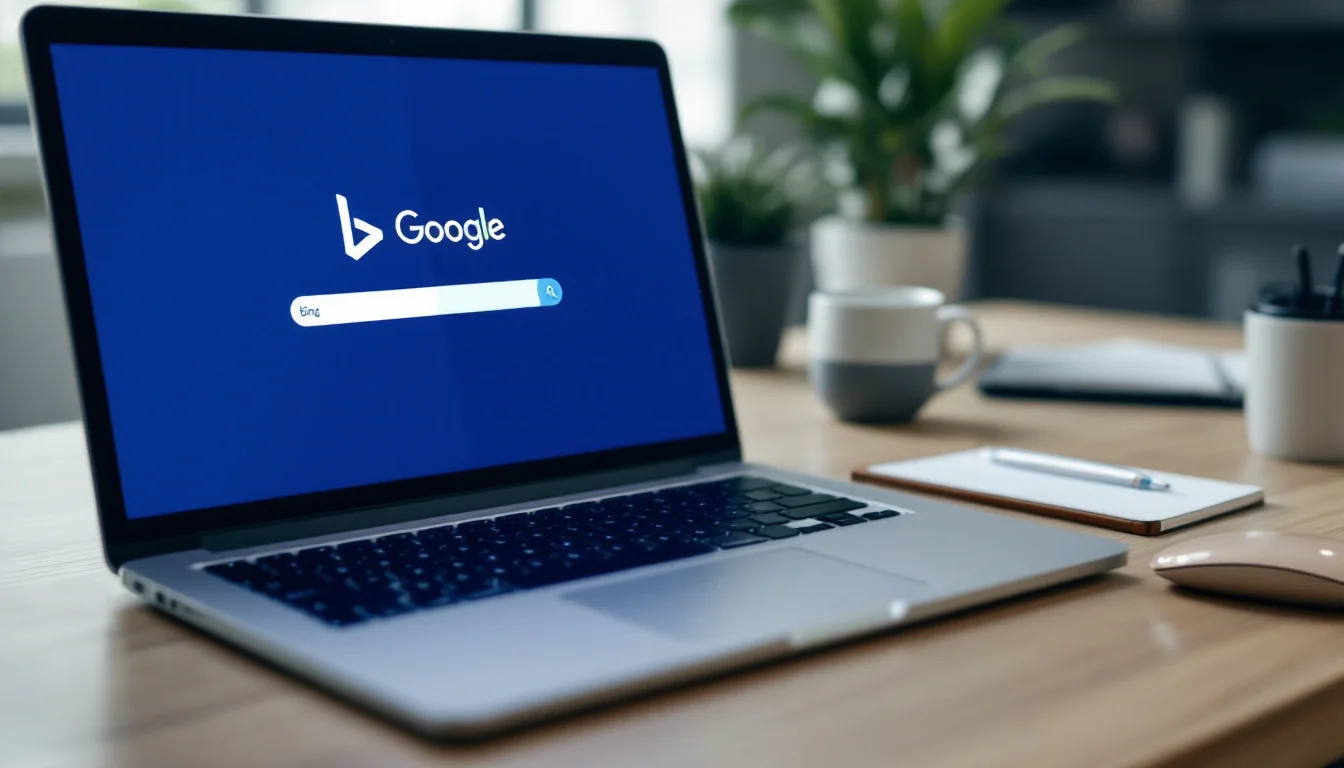
At Drop Cowboy, we often get asked about the best advertising platforms for our clients. When it comes to digital advertising, two giants stand out: Bing and Google.
In this post, we’ll explore the key differences between Bing vs Google Ads, helping you make an informed decision for your marketing strategy. We’ll compare their features, audience reach, and performance metrics to guide you towards the platform that best suits your business needs.
What is Bing Advertising?
The Bing Network’s Reach
Bing Advertising, also known as Microsoft Advertising, is a powerful platform that often goes unnoticed. Bing’s market share might surprise you. It controls 34% of the desktop search engine market globally. The Bing Network executes 5.4 billion monthly searches and has 136 million unique searchers. This represents a significant audience that many advertisers overlook.
Bing’s User Demographics
Understanding Bing’s user demographics is key for effective ad targeting. Almost 40% of Bing Network users fall between 35 to 54 years old, appealing to a more mature demographic. Moreover, 33% of Bing users have a household income exceeding $100,000, and nearly half earn over $75,000. This presents a unique opportunity for businesses targeting an older, more affluent audience.
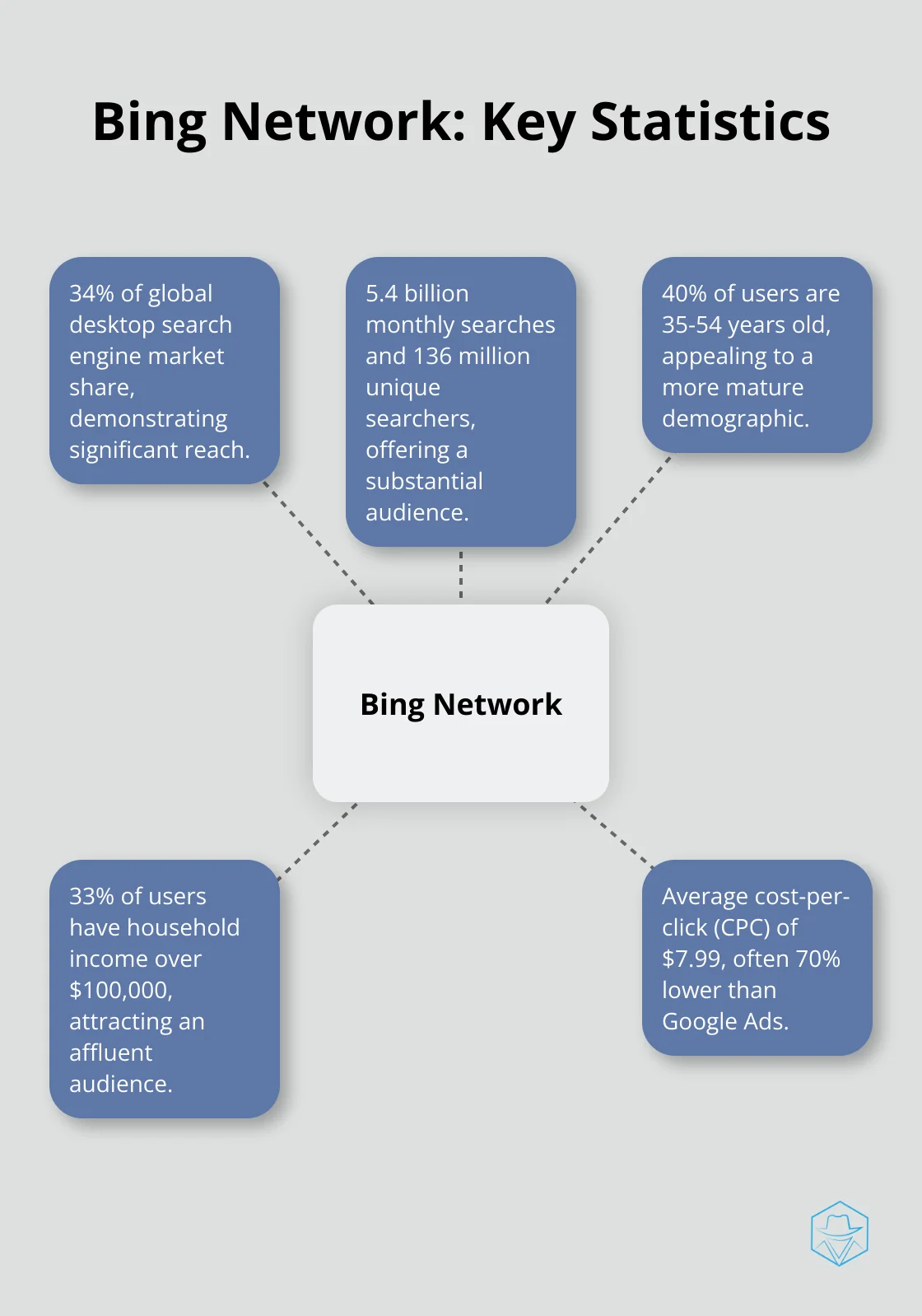
Cost-Effective Advertising
One of Bing’s most attractive features is its cost-effectiveness. The average cost-per-click (CPC) on Bing Ads is approximately $7.99, compared to $20.08 on Google Ads. In some cases, CPCs can be up to 70% lower on Bing Ads than on Google Ads. A study by Search Engine People found CPCs in the automotive industry to be 32.5% lower on Bing than Google.
Unique Features of Bing Ads
Bing Ads offers several unique features that distinguish it from competitors. It allows for better targeting granularity at the ad group level, enhancing campaign control. Advertisers can directly import their existing Google Ads campaigns into Bing Ads for easier transitions. Bing also enables improved device targeting, allowing ads to appear specifically on mobile devices.
Ad Formats and Extensions
Bing supports various ad formats, including text ads, shopping ads, and dynamic search ads. Its sitelink extensions can boost visibility and engagement by offering additional information in ads. These extensions are often larger and more noticeable compared to Google’s, potentially increasing click-through rates.
As we move forward to explore Google Advertising, it’s important to keep these unique aspects of Bing Advertising in mind. The comparison will help you make an informed decision about which platform (or combination of platforms) will best serve your advertising needs.
What Makes Google Ads Stand Out
Unrivaled Market Dominance
Google Ads reigns supreme in digital advertising, commanding a 91.38% market share. This platform processes over 8 billion searches daily (approximately 5.78 million searches per minute), offering advertisers unparalleled exposure.
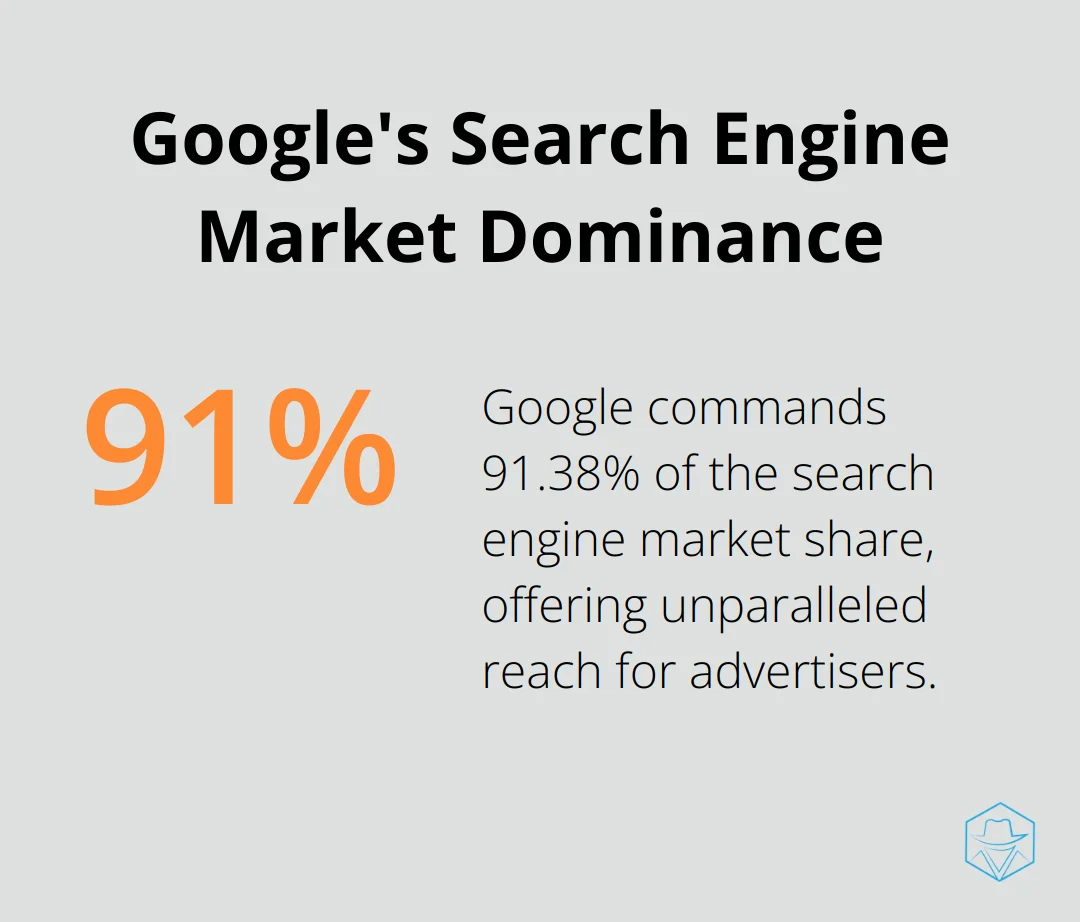
Extensive Audience Reach
With 89.73% of the search engine market share, Google Ads provides advertisers access to an enormous user base. Your ads can potentially reach billions of users daily across Google’s search engine, YouTube, and partner websites (a network that covers 90% of online users).
Diverse Campaign Types
Google Ads offers a variety of campaign types to match different marketing objectives:
- Search campaigns
- Display campaigns
- Video campaigns (including YouTube ads)
- Shopping campaigns
- App campaigns
This versatility allows advertisers to tailor their approach based on specific goals and target audiences.
Sophisticated Targeting Options
Google Ads excels in its targeting capabilities. Advertisers can pinpoint their audience using:
- Demographics
- Affinity audiences
- In-market audiences
- Remarketing lists
These granular targeting options help ensure ads reach the most relevant users, potentially increasing return on investment.
Performance Metrics
While Google Ads offers extensive reach, it’s not always the most cost-effective option. The average cost-per-click (CPC) for Google Ads is $2.32, higher than some alternatives. However, the platform delivers strong results with an average click-through rate (CTR) of 3.17% and a conversion rate of 3.75%.
As we transition to comparing Bing and Google advertising, it’s important to consider these strengths of Google Ads alongside your specific business needs, budget, and target audience. The next section will provide a detailed comparison to help you make an informed decision between these two advertising giants.
Bing vs Google Ads: Which Delivers Better ROI
Cost-Effectiveness and Budget Considerations
Google Ads, with its massive reach, comes at a premium. The average cost-per-click (CPC) on Google is $2.32, significantly higher than Bing’s $1.54. This difference can substantially impact your advertising budget, especially for small to medium-sized businesses.
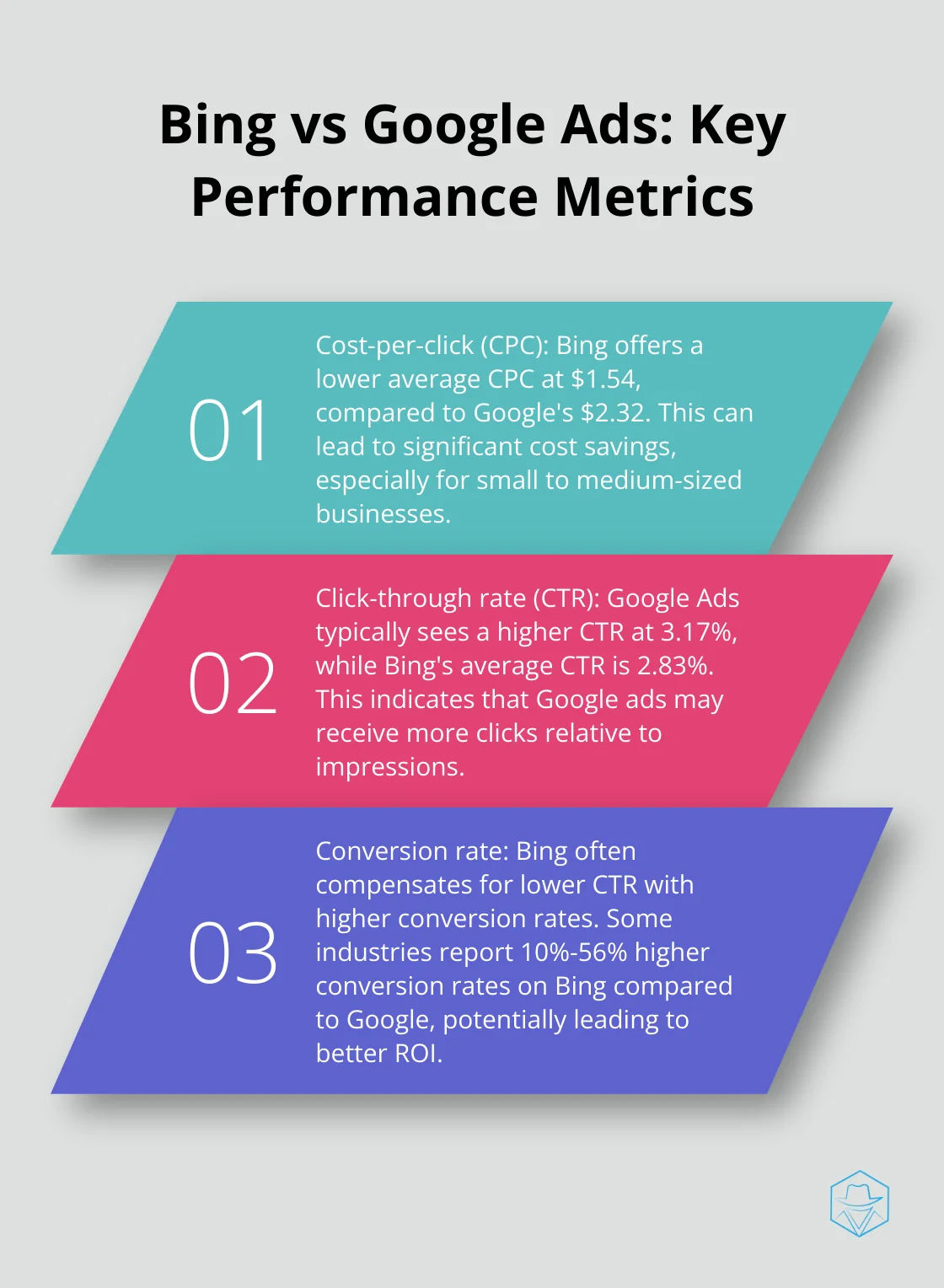
Bing’s lower CPC doesn’t just mean cheaper clicks. It often translates to a better return on ad spend (ROAS). In fact, some industries see up to 70% lower CPCs on Bing compared to Google. For example, in the automotive sector, Bing’s CPCs are 32.5% lower than Google’s (according to a study by Search Engine People).
Audience Reach and Targeting Precision
While Google boasts an impressive 91.38% market share, Bing shouldn’t be overlooked. Bing’s network reaches 63 million unique searchers that Google doesn’t target. This presents a significant opportunity for businesses looking to expand their reach.
Google’s strength lies in its sophisticated targeting options. With features like affinity audiences and in-market audiences, advertisers can pinpoint their ideal customers with remarkable precision. Bing, while not as advanced, offers unique targeting options like LinkedIn Profile Targeting, which can be a game-changer for B2B marketers.
Performance Metrics and Conversion Rates
Google Ads typically sees higher click-through rates (CTR), averaging 3.17% compared to Bing’s 2.83%. However, Bing often compensates with higher conversion rates. Some industries report 10%-56% higher conversion rates on Bing compared to Google.
It’s worth noting that Bing users tend to be older and more affluent (with 33% having household incomes over $100,000). This demographic can lead to higher-value conversions, especially for luxury or high-ticket items.
Industry-Specific Considerations
Your industry plays a key role in determining which platform will perform better. For instance, financial services and B2B companies often see better results on Bing due to its older, more affluent user base. On the other hand, consumer goods and tech companies might find Google’s broader reach more beneficial.
A combination of both platforms often yields the best results. This approach allows businesses to leverage Google’s vast reach while taking advantage of Bing’s cost-effectiveness and unique audience.
Optimization Strategies
To maximize ROI, start with a split budget between both platforms. Closely monitor performance and adjust your strategy based on the data. This approach will help you find the sweet spot for your specific business needs and target audience.
Try A/B testing different ad copies and landing pages on each platform. Google’s larger user base allows for quicker data collection, while Bing’s lower competition can provide clearer insights into what resonates with your audience.
Final Thoughts
Bing vs Google Ads each offer unique advantages for advertisers. Google’s vast reach and advanced targeting options make it ideal for businesses seeking maximum exposure. Bing’s cost-effectiveness and access to a distinct, often more affluent demographic provide excellent value for specific marketing goals.
Success in digital advertising requires testing and optimization. We recommend allocating a portion of your budget to both platforms and monitoring performance metrics closely. This approach will help you refine your campaigns and adjust your budget allocation for optimal results.
At Drop Cowboy, we understand the importance of multi-channel marketing. Our platform offers innovative solutions like ringless voicemail and SMS marketing to complement your advertising efforts. These tools can help you reach your audience through multiple touchpoints, enhancing your overall marketing strategy.
blog-dropcowboy-com
Related posts

May 12, 2025
Which Android Voicemail App Should You Choose?
Explore the best voicemail Android app to enhance your communication. Discover features, benefits, and tips for choosing the perfect fit for your needs.

July 1, 2025
Quick Dialer: Speed Up Your Calling Process
Supercharge call efficiency with a quick dialer. Enhance workflow, reduce waiting times, and optimize communication for better business performance.
![Perfect Your SMS Timing for Maximum Open Rates [Guide]](/blog/wp-content/uploads/emplibot/sms-timing-optimization-hero-1756512408-600x400.webp)
September 3, 2025
Perfect Your SMS Timing for Maximum Open Rates [Guide]
Boost engagement by mastering SMS timing optimization. Learn actionable tips to enhance open rates and elevate your messaging strategy.

June 4, 2025
Lofty CRM: Elevate Your Business Management
Boost your business efficiency with Lofty CRM. Explore effective management strategies, leveraging real-time insights and nurturing customer relationships.

May 27, 2025
Is Close CRM the Right Choice for Your Business?
Explore if Close CRM suits your business by examining key features, benefits, and Close CRM reviews. Find out if it matches your business needs today.
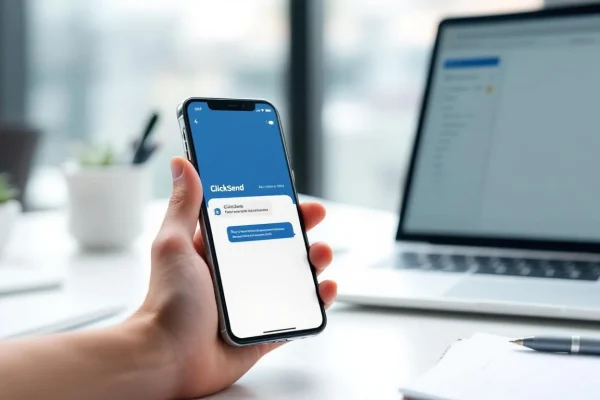
June 27, 2025
How to Use ClickSend SMS for Effective Communication
Boost communication efficiency with ClickSend SMS. Explore best tips and practical strategies to improve your messaging impact instantly.